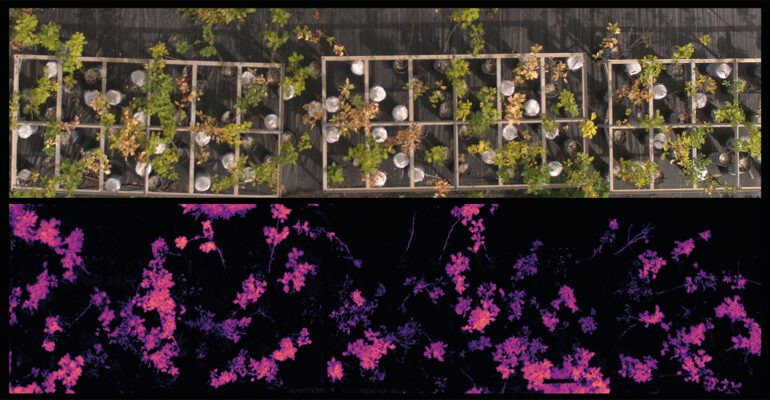- Recent research introduces a groundbreaking approach to detect and differentiate oak ailments.
- Utilizes remote sensing, spectroscopy, and machine learning for early identification of unhealthy oaks.
- Enables distinction between drought stress and oak wilt, a deadly fungal disease.
- Crucial for preserving oak populations, which play vital roles in climate regulation and biodiversity.
- The research team aims to expand the model’s applicability to other tree diseases for widespread use.
Main AI News:
In the realm of ecological preservation, the health of oak trees holds significant importance. Detecting ailments in these vital organisms has long been a labor-intensive task for scientists, often involving manual observation from airplanes or traversing forests on foot. Yet, certainty remained elusive. However, recent breakthrough research offers a promising solution to this enduring challenge.
A groundbreaking study published in the prestigious Proceedings of the National Academy of Sciences (PNAS) sheds light on a novel approach to identifying and distinguishing between different ailments affecting oak trees. Leveraging the combined power of remote sensing, spectroscopy, and machine learning, a team of researchers has revolutionized the detection process. This innovative method not only enables the early identification of unhealthy oaks but also facilitates the discrimination between drought stress and oak wilt, a deadly fungal disease.
The methodology employed by the research team involved monitoring the physiological changes in afflicted trees while simultaneously analyzing how they reflect light. By establishing correlations between these factors, they developed a sophisticated machine learning model capable of pinpointing diseased oaks and discerning the specific ailment they suffer from.
Dr. Jeannine Cavender-Bares, a distinguished authority in ecology, evolution, and behavior at the University of Minnesota and co-author of the study, elucidates the approach: “We obtained spectroscopic information in many wavelengths from light reflected from plants. When we do this, we get a spectral fingerprint of the plant, which allows us to detect disease when we couple it with machine learning models.”
This technological advancement is particularly crucial in regions like North America, home to a plethora of oak species. With oaks constituting nearly 11% of the country’s tree population, their preservation is paramount for climate regulation, biodiversity maintenance, and soil conservation. However, the onslaught of threats, including oak wilt and drought stress exacerbated by climate change, jeopardizes their survival.
Early detection of oak ailments is pivotal for effective intervention. Once oak wilt takes hold, the consequences are dire, as Dr. Cavender-Bares explains: “The fungus goes down into the roots and into the vascular system. If undetected, it will kill all the neighbors, and then you’ve got a pocket of infested trees, which is harder to manage.”
Building on their initial success, the research team aims to expand the model’s capabilities to encompass other tree diseases while striving to enhance its accessibility for widespread implementation. This endeavor aligns with their broader mission of empowering conservationists and land managers with the tools needed to safeguard our natural ecosystems.

Source: Conservation news
Conclusion:
The integration of drone technology and machine learning into ecological research represents a significant advancement in oak health monitoring. This innovative approach not only enhances early detection of ailments but also enables targeted intervention strategies. For businesses in the environmental sector, this signifies a burgeoning market for technology-driven solutions aimed at preserving and managing natural ecosystems.

